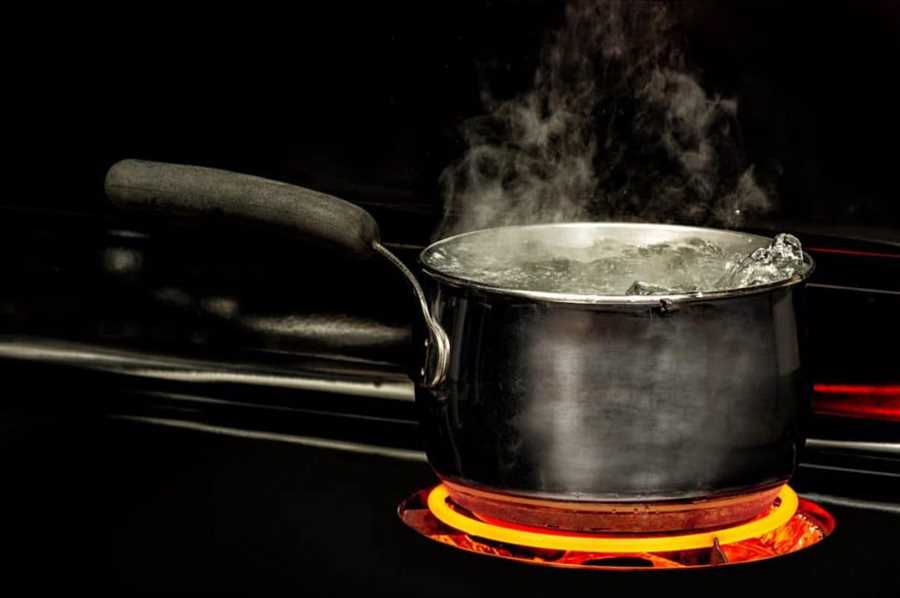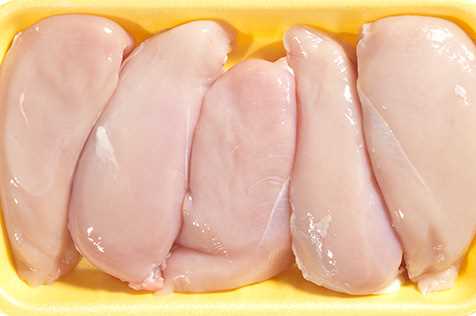





Chicken is a popular and versatile meat that is consumed by millions of people worldwide. However, there is always a concern about the presence of bacteria, such as salmonella, in raw chicken. This raises an important question: can you cook bacteria out of chicken?
When chicken is properly cooked, it can effectively kill most bacteria that may be present. Cooking chicken to an internal temperature of 165°F (75°C) is generally considered safe, as this temperature is sufficient to destroy harmful bacteria. However, it is important to note that cooking chicken to this temperature may not eliminate all types of bacteria.
It is also worth mentioning that proper food handling and storage practices are crucial in reducing the risk of bacterial contamination. Washing hands thoroughly before and after handling raw chicken, using separate cutting boards for raw chicken and other foods, and refrigerating chicken promptly after purchase are some of the measures that can help prevent the spread of bacteria.
Top RatedInstant Read Digital Meat ThermometerFast reading with dual functionThis digital meat thermometer combines a fast response time with a built-in bottle opener, perfect for culinary gatherings. Its IP66 waterproof feature ensures durability and reliable readings for all your cooking needs.So, while cooking chicken to the recommended internal temperature can greatly reduce the risk of bacterial contamination, it is important to exercise caution and follow proper food handling practices to ensure food safety.
Health Risks of Undercooked Chicken
Undercooked chicken poses several health risks due to the presence of harmful bacteria. Salmonella and Campylobacter are two common bacteria found in raw or undercooked chicken that can cause food poisoning.
- Salmonella: This bacterium can cause symptoms such as diarrhea, stomach cramps, fever, and vomiting. In severe cases, it can lead to dehydration and hospitalization.
- Campylobacter: Consumption of undercooked chicken contaminated with Campylobacter can result in symptoms like diarrhea, abdominal pain, and fever. In some cases, it can also lead to more severe complications, such as Guillain-Barré syndrome, which can cause paralysis.
It’s important to note that cooking chicken properly can help kill these bacteria and reduce the risk of food poisoning. The United Kingdom Food Standards Agency advises cooking chicken until it reaches an internal temperature of 75°C throughout to ensure it is safe to eat.
In addition to these bacterial risks, undercooked chicken may also contain other pathogens, such as viruses and parasites, which can cause further health issues.
To minimize the health risks associated with undercooked chicken, follow proper food safety practices, including:
- Always cook chicken thoroughly, ensuring it is no longer pink and the juices run clear.
- Use a food thermometer to check the internal temperature of the chicken.
- Prevent cross-contamination by keeping raw chicken separate from other foods and using separate utensils and cutting boards.
- Wash your hands thoroughly with soap and water after handling raw chicken.
By properly handling and cooking chicken, you can significantly reduce the risk of foodborne illnesses and protect your health.
Foodborne illnesses
Foodborne illnesses, also known as food poisoning, are infections or irritations of the gastrointestinal tract caused by consuming contaminated food or beverages. These illnesses can be caused by bacteria, viruses, parasites, or toxins produced by these microorganisms.
Some common bacteria that cause foodborne illnesses include Salmonella, Campylobacter, and E. coli. These bacteria can contaminate a wide range of foods, such as poultry, meat, eggs, and unpasteurized dairy products. Consuming these contaminated foods can lead to symptoms like nausea, vomiting, diarrhea, abdominal pain, and fever.
Preventing foodborne illnesses
There are several measures you can take to prevent foodborne illnesses:
- Wash your hands thoroughly before and after handling food.
- Cook foods, especially raw meat and poultry, to their recommended internal temperatures to kill any bacteria present.
- Keep raw and cooked foods separate to prevent cross-contamination.
- Refrigerate perishable foods promptly to slow down bacterial growth.
- Avoid consuming raw or undercooked eggs, meat, or seafood.
Proper food handling and preparation practices are crucial in reducing the risk of foodborne illnesses. It is important to follow good hygiene practices, adhere to cooking guidelines, and ensure the proper storage of food to ensure safe consumption.
If you suspect that you have contracted a foodborne illness, it is important to seek medical attention. Most cases of food poisoning resolve on their own without any specific treatment, but severe cases may require medical intervention.
Salmonella and Campylobacter
Salmonella and Campylobacter are two common types of bacteria that can be found in raw chicken. These bacteria can cause illness if consumed, which is why it is important to handle and cook chicken properly to reduce the risk of contamination.
Salmonella
Salmonella is a type of bacteria that can cause Salmonellosis, a foodborne illness. It can be found in the intestines of animals, including chickens, and can contaminate the meat during processing. Symptoms of Salmonella infection include fever, diarrhea, and abdominal cramps. In severe cases, the infection may spread to the bloodstream and other parts of the body, potentially leading to death.
Campylobacter
Campylobacter is another type of bacteria commonly found in raw poultry, including chicken. It is one of the leading causes of bacterial gastroenteritis worldwide. Campylobacteriosis symptoms include diarrhea (often bloody), abdominal pain, fever, and vomiting. While most cases of Campylobacter infection are not life-threatening, complications can occur in people with weakened immune systems.
To reduce the risk of Salmonella and Campylobacter infections, proper food handling and cooking techniques should be followed. This includes washing hands thoroughly before and after handling raw chicken, using separate cutting boards for poultry and other foods, and cooking chicken to a safe internal temperature of 165°F (74°C).
- Avoid cross-contamination by keeping raw chicken separate from other foods during storage and preparation.
- Thoroughly clean and sanitize all surfaces, utensils, and equipment that come into contact with raw chicken.
- Do not wash raw chicken before cooking, as this can spread bacteria onto kitchen surfaces.
- Make sure to cook chicken thoroughly, ensuring that the meat reaches an internal temperature of 165°F (74°C) to kill any harmful bacteria.
- Refrigerate leftovers promptly and consume them within a few days to prevent bacterial growth.
By following these guidelines, you can reduce the risk of bacterial contamination and enjoy safe and delicious chicken dishes.
Can cooking kill bacteria in chicken?

When it comes to cooking chicken, one of the main concerns is ensuring that any bacteria present in the meat is eliminated. Cooking chicken thoroughly can indeed kill most types of bacteria, including those that cause foodborne illnesses such as salmonella and campylobacter.
The high temperatures reached during cooking can destroy the harmful bacteria that may be present. However, it is important to note that simply cooking the chicken at any temperature may not be enough to ensure complete safety. It is essential to cook the chicken to an internal temperature of at least 165°F (74°C) to kill any remaining bacteria.
Using a food thermometer is recommended to accurately measure the temperature of the chicken. Insert the thermometer into the thickest part of the meat, avoiding any bones, and wait for it to give a reading. If the temperature is below 165°F (74°C), continue cooking the chicken until it reaches the recommended temperature.
Proper cooking techniques, such as grilling, baking, or frying the chicken at the correct temperature, can significantly reduce the risk of bacterial contamination. It is also important to avoid cross-contamination by keeping raw chicken separate from other foods and using separate utensils and cutting boards.
| Safe Minimum Internal Temperature | Chicken, turkey, and other poultry |
|---|---|
| 165°F (74°C) | For whole or ground poultry |
| 165°F (74°C) | For breasts, wings, thighs, and legs |
| 165°F (74°C) | For stuffing, casseroles, and leftovers |
By following proper cooking guidelines and ensuring that chicken reaches the recommended internal temperature, you can effectively kill bacteria and minimize the risk of foodborne illnesses associated with consuming undercooked chicken.
Proper cooking temperatures
Proper cooking temperatures are crucial when it comes to ensuring that bacteria are eliminated from chicken. It is essential to cook chicken to the correct internal temperature in order to kill harmful bacteria that may be present.
The USDA recommends cooking chicken to a minimum internal temperature of 165°F (74°C). At this temperature, any bacteria present in the chicken will be effectively killed, reducing the risk of foodborne illnesses such as Salmonella and Campylobacter.
Measuring the internal temperature
To accurately measure the internal temperature of chicken, it is recommended to use a food thermometer. Insert the thermometer into the thickest part of the chicken, avoiding any bones, and wait for the reading to stabilize. Ensure that the thermometer does not touch the pan or any other surfaces as this can give an inaccurate reading.
Importance of reaching the proper temperature

Cooking chicken to the proper internal temperature is crucial to ensure food safety. While chicken may appear fully cooked based on its appearance, it doesn’t guarantee that it is safe to eat. It is important to reach the proper cooking temperature to eliminate any potential pathogens that may be present on the chicken.
By following the recommended cooking temperatures and using a food thermometer, you can ensure that the chicken is cooked thoroughly, reducing the risk of foodborne illnesses and keeping yourself and your family safe.
Questions and answers
Is it possible to cook bacteria out of chicken?
Yes, cooking can kill most types of bacteria that may be present in chicken.
What temperature should chicken be cooked to in order to kill bacteria?
Chicken should be cooked to an internal temperature of at least 165°F (74°C) to ensure that any bacteria present are killed.
Can washing chicken remove bacteria?
Washing chicken before cooking it may remove some surface bacteria, but it is not a reliable method for eliminating all bacteria. Proper cooking temperatures are necessary to ensure bacteria are killed.
What are the risks of eating undercooked chicken?
Eating undercooked chicken can lead to foodborne illnesses such as salmonella or campylobacter infection, which can cause symptoms like fever, diarrhea, and stomach cramps.
Are there any alternative methods to cooking chicken to kill bacteria?
Cooking chicken thoroughly is the most effective method for killing bacteria. However, some people choose to use pasteurized chicken, which has been treated to reduce bacterial contamination.
Is it possible to cook bacteria out of chicken?
Yes, it is possible to cook bacteria out of chicken by ensuring that the chicken reaches a high enough internal temperature. The recommended internal temperature for chicken is 165°F (74°C). Cooking chicken to this temperature will kill any bacteria present.






